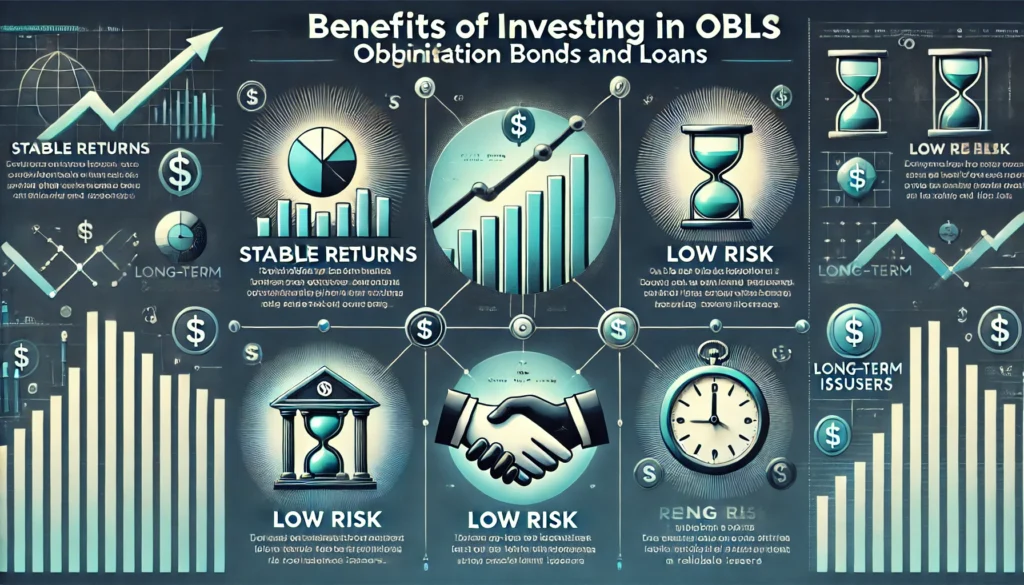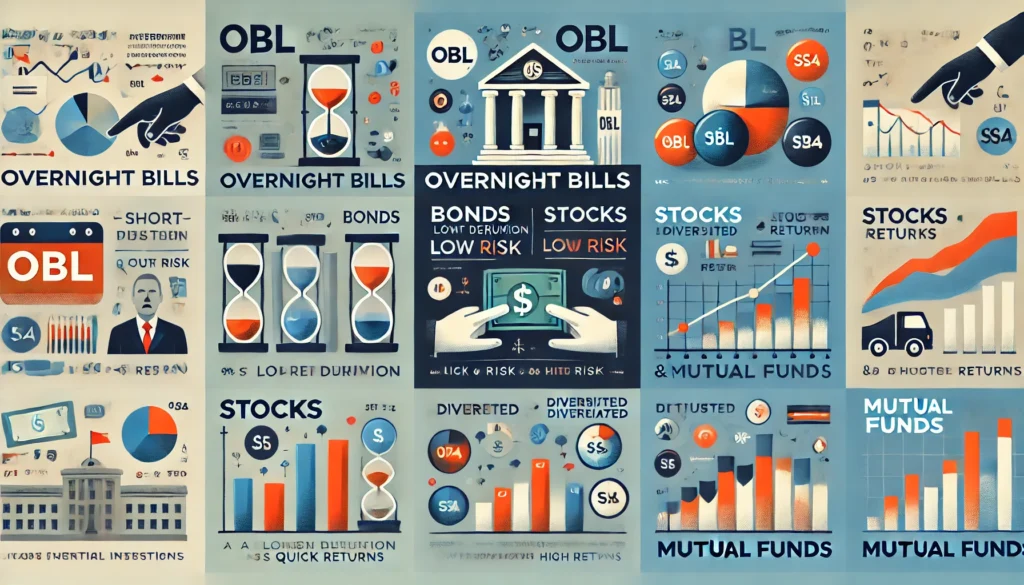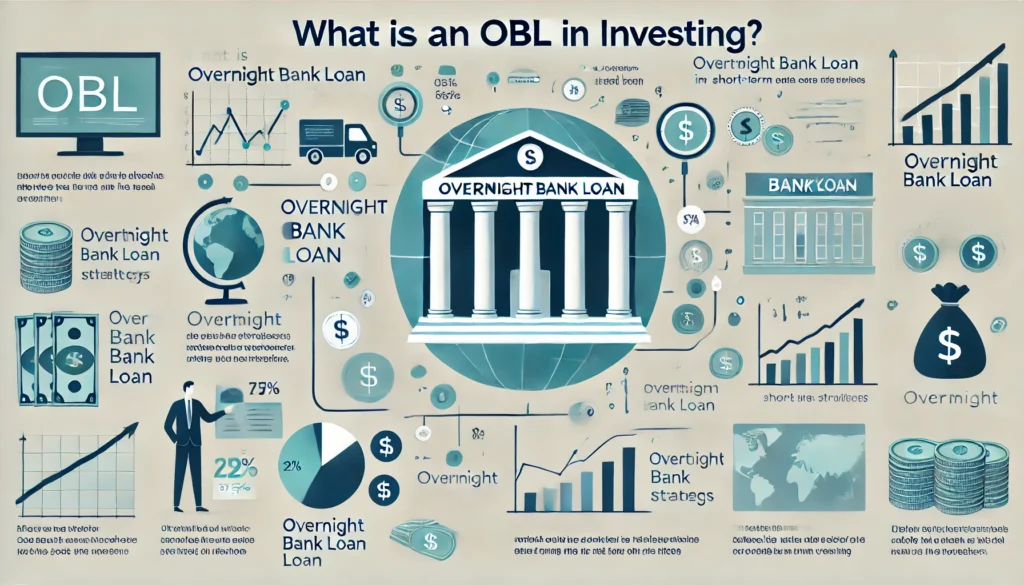What is an OBL in investing?
Investing is a multifaceted enterprise, and information on the diverse economic devices available is critical for making informed choices. One such device that regularly piques the interest of seasoned traders is the prepared enterprise mortgage (OBL). OBLs present a unique possibility of interacting with enterprise financing even while securing solid returns. In this submission, we’ll explore OBLs, how they work, and why they might be a precious addition to your funding portfolio.
Table of Contents
Understanding OBLs in Investing
An Organized Business Loan (OBL) is a financial product where buyers lend capital to organizations underneath established phrases. These loans are designed to offer each corporation and investor clear expectations concerning reimbursement schedules, interest rates, and loan terms. OBLs serve various functions, from funding operations to assisting growth projects, and are mainly beneficial in sectors like the clinical area or infrastructure.
Definition of OBL
At its core, an OBL is a debt tool where an organization borrows capital with the commitment to repay the investor through scheduled interest payments. OBLs aren’t popular loans; they are dependent on providing a more flexible and relaxed funding opportunity for those seeking to finance enterprise ventures.
The Structure of OBLs
The shape of an OBL can vary, depending on the needs of the commercial enterprise and the expectations of the investor. Commonly, OBLs encompass info together with constant or variable interest costs, reimbursement schedules, and whether the mortgage is secured or unsecured. For example, an OBL scientific mortgage ought to contain the investment of medical era innovation, supplying both fixed returns and long-term reimbursement plans.
How OBLs Work
OBLs operate similarly to other loan structures but often have more flexible terms. When an investor purchases an OBL, they essentially become a lender to the business. The business then utilizes the capital for specific projects or general growth, with the promise of paying back the principal plus interest. OBLs provide a predictable cash flow for investors, making them an attractive option for those seeking stable returns.
Benefits of Investing in OBLs
Investing in OBLs offers several advantages that can diversify your investment portfolio and generate consistent income.
1. Predictable Income
One of the maximum massive benefits of OBLs is the predictable earnings stream. Buyers acquire regular interest bills on their funding, just like bonds. This predictability is specifically appealing to conservative buyers looking for stability and a dependable source of income.
2. Diversification Opportunities
OBLs allow investors to diversify their portfolios past traditional properties like stocks and bonds. With the aid of inclusive OBL scientific loans or loans to corporations in different sectors, traders can unfold their threat and boom the ability for greater stable returns. Diversification through OBLs allows for reducing reliance on more unstable economic markets.
3. Facilitating Business Growth
OBLs are regularly used to fund commercial enterprise boom and innovation. As an example, an OBL vascular loan could finance the development of a new scientific manner or product, assisting the commercial enterprise’s growth whilst supplying buyers with returns from the generated profits. By investing in OBLs, you help organizations develop and scale, creating a fine impact on both the financial area and the broader financial system.
4. Risk Management
OBLs are commonly established to manage hazards efficiently. Because they are frequently secured using business assets, the probability of losing your capital is decreased in case of default. However, like every funding, there may be some chance concerned, so it’s vital to conduct thorough studies earlier before committing to OBL funding.

Risks Associated with OBLs
As with any financial instrument, OBLs include inherent risks that want to be considered earlier than investing.
1. Default Risk
Default chance refers back to the possibility that the borrower—the business—fails to meet its reimbursement responsibilities. This will happen if the business enterprise encounters monetary problems, turns insolvent, or studies other unexpected demanding situations. To mitigate this threat, buyers ought to examine the financial health and creditworthiness of the borrowing business.
2. Interest Rate Risk
interest fee risk is another element to bear in mind whilst investing in OBLs. If hobby charges rise, the cost of current OBLs could lower, making it extra tough to promote the investment at a worthwhile rate. OBLs with constant interest prices are less tormented by hobby rate fluctuations; however, they are nevertheless at risk of this change over time.
3. Illiquidity
OBLs aren’t as liquid as shares or bonds. If you want to sell your funding before the loan matures, it can be difficult to discover a purchaser, or you can need to promote at a loss. This illiquidity element is something investors ought to weigh cautiously, specifically if they assume desiring to get entry to their budget earlier than predicted.
Who Should Invest in OBLs?
OBLs can be a splendid investment opportunity for numerous sorts of traders, depending on their danger tolerance, monetary goals, and investment strategies.
Conservative Investors
For conservative investors who prioritize balance and predictability, OBLs can provide a constant earnings flow and decrease threat as compared to equities. The based nature of OBLs offers peace of thought, in particular for people who are danger-averse but are looking for significant returns on their investments.
Institutional Investors
Massive establishments, which include pension finances, insurance businesses, and mutual funds, often find OBLs attractive due to their potential to generate predictable returns at the same time as supporting the diversification of portfolios. Those investors can come up with the money to tackle big investments in OBLs, in particular the ones presenting attractive terms and a coffee default threat.
Socially Responsible Investors
Socially accountable buyers will find that OBLs align with their funding goals when they target businesses in industries that include medical generation, easy energy, or infrastructure. By making an investment in OBLs tied to socially aware agencies, investors can generate returns at the same time as contributing to a more societal effect.
OBL vs. Other Financial Instruments
Understanding how OBLs evaluate other financial instruments, such as bonds and equities, is prime to comparing their area in your portfolio.
OBL vs. Bonds
Both OBLs and bonds are debt instruments, but OBLs often offer more customized terms, including flexible repayment schedules and adjustable interest rates. Bonds, by contrast, are more standardized and traded on public markets, providing a different kind of liquidity and investor involvement. For those seeking tailored loans that target specific sectors or industries, OBLs can offer greater advantages.

OBL vs. Equities
Equities represent possession in a business enterprise; that means traders can benefit from the agency’s increase and profitability through capital appreciation and dividends. In comparison, OBLs are in the shape of debt funding, presenting regular profits from hobby payments but no longer ownership in the organization. Equities tend to be at greater risk, whilst OBLs provide more predictable returns, making them suitable for the ones in search of lower threat and solid profits.
Conclusion
In conclusion, OBLs provide a unique investment opportunity that mixes predictable income with the capability to aid business increase. While they do come with sure dangers, together with default and interest fee dangers, their established nature makes them an attractive choice for conservative, institutional, and socially accountable investors alike. Using knowledge of how OBLs work and how they compare to different monetary contraptions like bonds and equities, you can make an informed decision about adding them to your funding method.
Ultimately, the decision to invest in OBLs should be based on your financial goals, risk tolerance, and desire to contribute to business growth in targeted industries. When selected carefully, OBLs can be a valuable asset in diversifying your portfolio and securing stable, long-term returns.
FAQs
What is an OBL in investing?
An OBL (Organized Business Loan) is a structured debt investment where investors lend money to businesses for steady interest payments and principal repayment.
How do OBLs work?
OBLs offer fixed or variable interest rates, and repayment schedules, and may be secured or unsecured, providing income for investors while businesses grow.
What are the benefits of OBLs?
OBLs provide predictable income, portfolio diversification, business growth opportunities, and risk management for investors.
What are the risks of OBLs?
Risks include default, interest rate fluctuations, and illiquidity if the investment can’t be sold before maturity.
Who should invest in OBLs?
OBLs are ideal for conservative investors, institutional investors, and those seeking socially responsible investments.
How do OBLs compare to bonds or equities?
OBLs offer flexible terms and predictable returns, unlike bonds or equities, which are more volatile or involve ownership.







